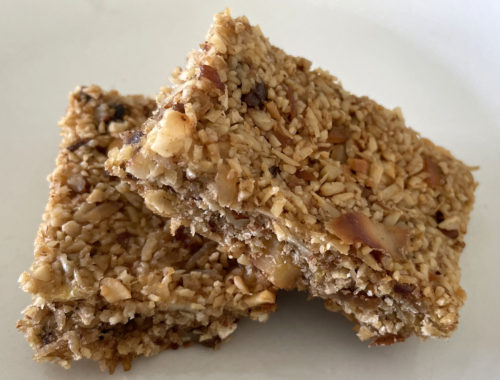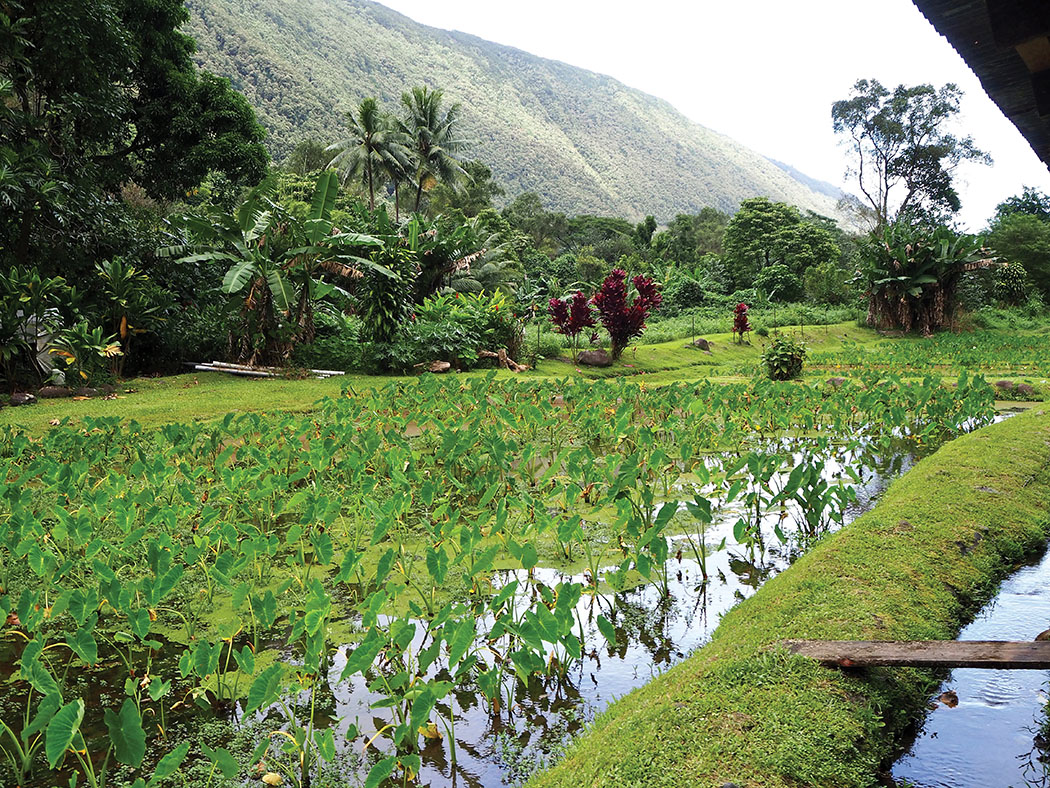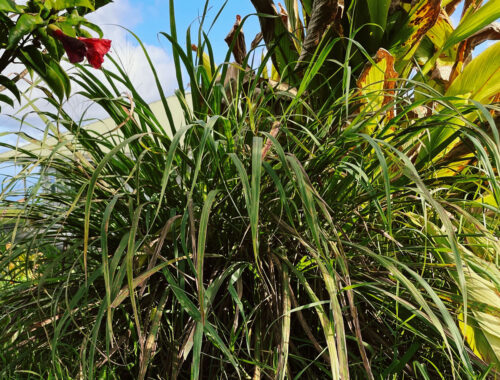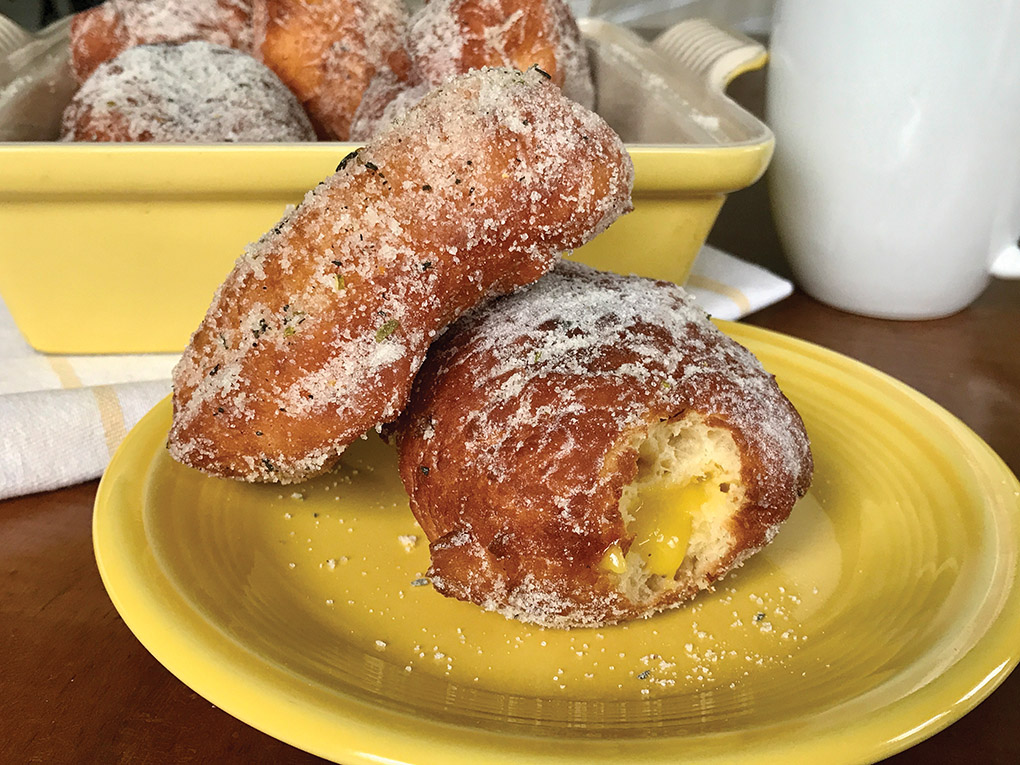
A Taste of History: The Magic of Malasadas
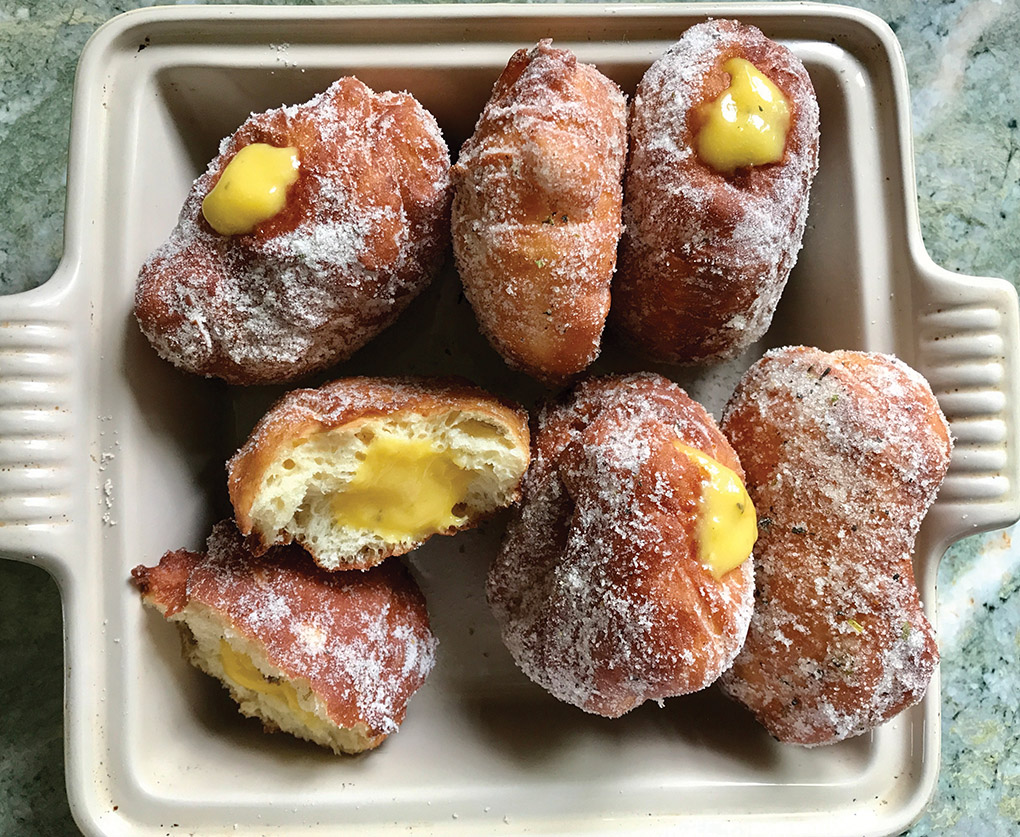 By Brittany P. Anderson
By Brittany P. Anderson
I can still remember the first time I tasted a malasada; fresh and warm, the sugar glistening. First, there was the crunch of the fried outside as I bit into it, then the rich soft eggy dough center. I couldn’t walk and eat at the same time. My eyes closed as I licked the granulated sugar from my lips.

If you haven’t tasted the crispy, fluffy, sugary goodness of a malasada, you haven’t fully lived. Malasadas are commonly associated with Hawai‘i, but they’re actually a Portuguese doughnut. Malasadas have a slight crispness to the outside with a light and fluffy inside. Sometimes they’re stuffed, sometimes they aren’t—and the “best” malasada is a hotly contested debate subject, best not brought up in front of company.
How did this delicious ball of goodness come to be a Hawai‘i tradition? According to The Food of Paradise: Exploring Hawaii’s Culinary Heritage by Rachel Lauden, the recipe for malasadas was brought to Hawai‘i by Portuguese immigrants from Madeira and the Azores when they immigrated here in the nineteenth century to work on sugar cane plantations.
The predominantly Catholic Portuguese made malasadas on Shrove Tuesday, the day before Lenten fasting, much in the same way Germans have fastnachts, Poland’s paczki, or beignets of New Orleans’ Mardi Gras fame. Fried confections created a way to use up all the sugar, milk, and butter before Lenten fasting began.
What sets malasadas apart from the rest of the doughnuts is the amount of eggs used. Usually, one egg to every cup of flour is used in traditional recipes. Though malasadas were reserved for Shrove Tuesday, today they are a common treat on holidays, special occasions, or as a way of showing appreciation regardless of religion or cultural background.
Hawai‘i Island is arguably home to quite a few of the top malasada bakeries, with some of the best bakers being road side stands. Each malasada baker has their own family recipe that has been passed down the generations so there are variations from baker to baker.
If you do not have a family recipe and want to try to make malasadas at home, here is a recipe adapted from the famous Leonard’s bakery on O‘ahu and Tex Drive-In in Honoka‘a.
Malasada Recipe
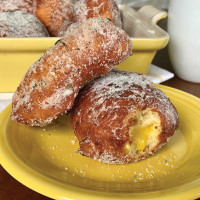 Ingredients
Ingredients
2 1/4 tsp active dry yeast
2 TBS warm water
1 tsp + 1/3 cup + 1 cup sugar, divided
3 eggs
1 tsp vanilla extract
1/2 tsp white wine vinegar
2 TBS unsalted butter, melted
1/2 cup milk
1/2 cup half & half
1/4 tsp sea salt
3 cups bread flour, sifted
Canola or coconut oil, for frying and greasing
Combine yeast, 1 tsp of sugar, and 2 TBS of warm water (110°F) in a bowl; let sit until foamy, about 10 minutes. Beat eggs in a bowl of a mixer with paddle attachment until fluffy. Add yeast mixture, the 1/3 cup sugar, vanilla, butter, milk, half & half, and salt. Mix on medium speed until well combined. Slowly add the flour to the mixture. Mix until dough is smooth and elastic. Well grease a bowl large enough to allow the mixture to double in size. Transfer dough to greased bowl and cover with clean dish towel. Set in warm place until doubled in size, about 2 hours.
Once doubled, cut dough into 2 pieces. On a lightly floured surface, roll dough into a rope ½” thick. Using a knife cut into 3” pieces, or 4” for larger malasadas. Place on baking sheets lined with greased parchment paper at least 3” apart. Cover with dish towel and set aside until doubled in size, about 1 hour.
Place 1 cup of sugar in a large bowl. Heat 2” of oil in heavy-bottomed pot until thermometer reads 350°F. Carefully, cut the parchment paper around the malasadas. With the spatula on top of dough, invert malasada with parchment paper. Drop malasadas in oil, parchment side up, using tongs to peel off the parchment. Cook on one side, then flip once puffed and golden, about 3 minutes. Transfer to a wire rack with paper towels underneath. Toss in sugar once cooled. If preferred, stuff with pudding, custard, or jam and enjoy immediately. ❖
